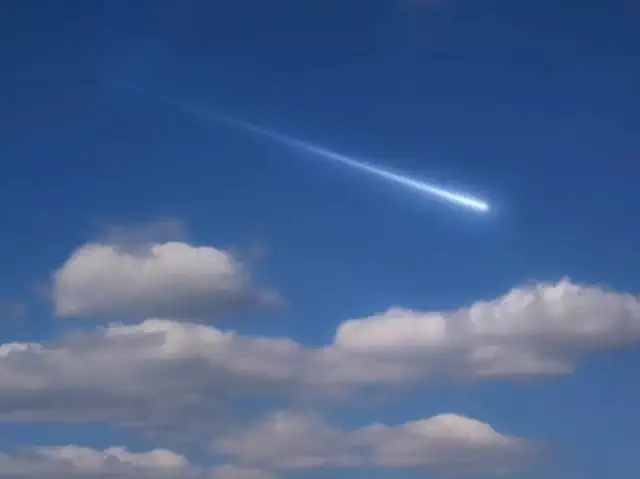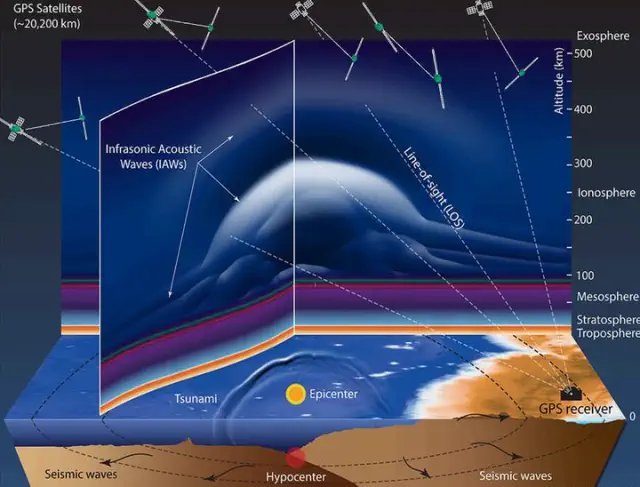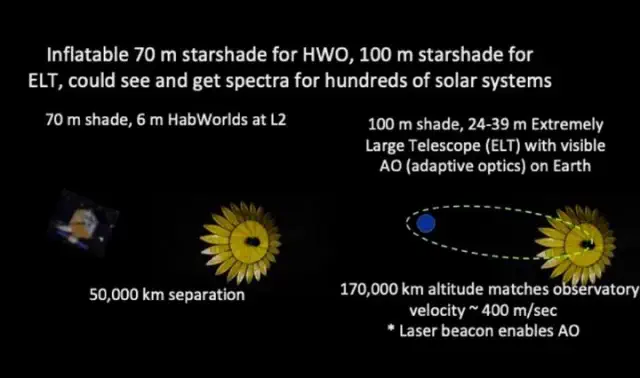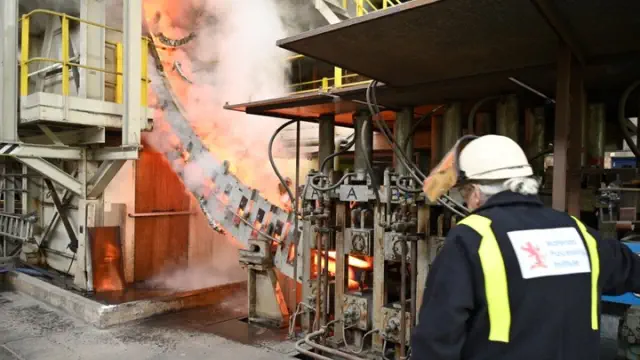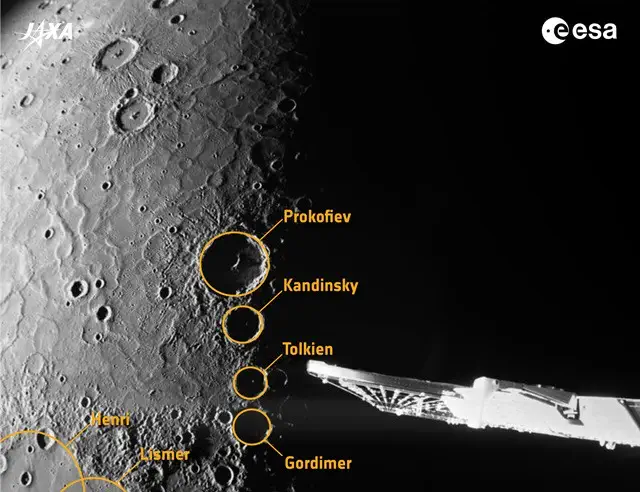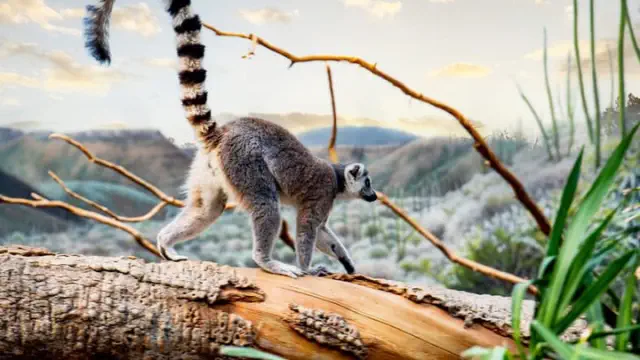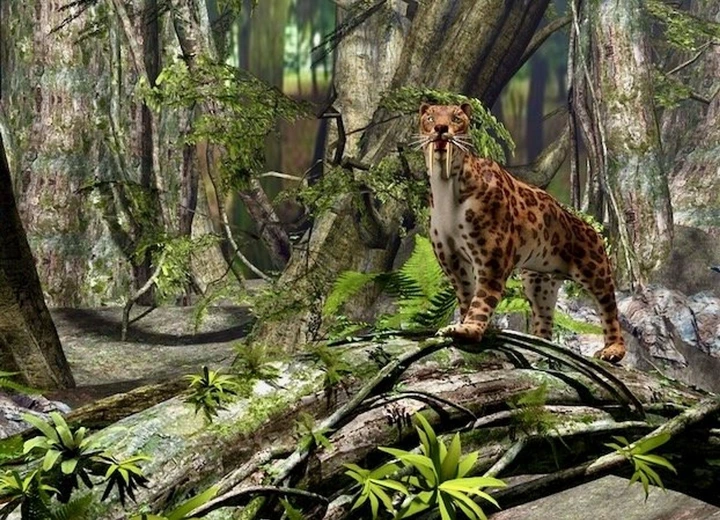
View pictures in App save up to 80% data.
Saber-toothed tiger (Shutterstock)
Saber teeth – the long, sharp, blade-like canines found in extinct predators such as Smilodon – represent one of the most extreme dental adaptations in nature. They evolved at least five times throughout mammalian history and are a classic example of convergence, which is when similar structures evolve independently in unrelated animal groups.
With no living representatives, scientists have long debated how these predators used their fearsome teeth, and why this extreme tooth shape evolved so often.
Our new study, published today in Current Biology, provides an answer. We found extreme sabre teeth are functionally optimal, meaning their shape provided a real advantage as specialized weapons. Their slender and sharp forms were perfect for puncturing prey. However, this came at a cost: sabre teeth were also weaker and more prone to breaking.
These discoveries hold significant value as they enhance our comprehension of the evolution of extreme adaptations in the natural world. Additionally, they provide valuable perspectives on optimal design principles that can be applied not only in biology but also in the fields of engineering and technology.
Saber-toothed hunters throughout history
Saber-toothed predators once inhabited various ecosystems worldwide. Fossil evidence of these creatures has been discovered across North America, Europe, Africa, and Asia.
What sets them apart are their sabre-like teeth, a unique form of canine tooth. These teeth are elongated, pointed, flattened on the sides, and exhibit a curved shape.
This contrasts with the shorter, sturdier, conical canines found in contemporary large felines like lions and tigers.

View pictures in App save up to 80% data.
Numerous extinct predators globally developed saber-shaped teeth that significantly differ from the teeth of today's large felines. Tahlia Pollock
This legendary tooth predates the dinosaurs, having emerged approximately 265 million years ago among a category of mammal-like reptiles known as gorgonopsids.
Over millions of years, saber teeth evolved repeatedly in different groups of carnivorous mammals, marsupial relatives like Thylacosmilus and “false” saber-tooth cats such as Barborofelis.
The most well known saber-toothed predator is Smilodon. It persisted until just 10,000 years ago.
You can look at a 3D model of one of these predators – Smilodon fatalis – below. This model has been digitised from a cast specimen from the Natural History Museum of Los Angeles County.
Extensive studies of saber-tooth ecology have led to a widely accepted conclusion that these formidable predators mainly hunted large animals. They employed powerful neck muscles to execute slashing attacks aimed at the soft tissues of their prey's throat. It is believed that their specialized teeth provided a significant advantage in this regard, enabling them to effectively deliver a lethal bite.
This concept is what we aimed to explore.
Evaluating the balance between puncture resistance and strength
In particular, we examined whether their shape achieved an ideal compromise between two opposing requirements concerning tooth functionality. On one hand, the teeth needed to be sharp and slender to effectively penetrate prey. On the other hand, they had to be sturdy and resilient to avoid damage or breakage.
In order to explore this topic, we performed an extensive analysis involving over 200 various carnivore teeth, which encompassed both extinct saber-toothed species and contemporary animals.
Initially, we assessed the three-dimensional structure of their teeth to compare saber teeth with those of other carnivorous species. Subsequently, we conducted two experiments to evaluate the biting performance of a selected group of these teeth.
We created tooth models using stainless steel and inserted them into a gelatin block (which mimicked prey flesh) to assess the force required for puncturing. By utilizing metal replicas, we avoided any bending of the teeth throughout the experiment, thus guaranteeing precise measurements of the puncture force.
We conducted engineering simulations to evaluate the stress levels experienced by various tooth shapes when subjected to biting forces. This analysis helped us understand their potential for fracturing.
Ultimately, we performed an "optimality" assessment to identify which dental shapes provided the most effective combination of puncture efficiency and durability.
A saber-toothed model created through 3D printing is being thrust into a gelatin block to assess the amount of force required for penetration.
The most advanced forms of saber-tooth are the most efficient.
Our findings regarding the shape of saber-toothed cats call into question the conventional classification of these predators into only two groups: the dirk-toothed, characterized by their elongated and slender form, and the scimitar-toothed, known for their shorter and laterally flattened appearance.
Instead, we uncovered a continuum of saber-tooth shapes. This ranged from extreme forms, such as the long, curved canines of Barbourofelis, Smilodon and Hopolophoneus, to less extreme forms, such as the straighter, more robust teeth of Dinofelis and Nimravus.
Our results reveal that the extreme saber-toothed forms, like Smilodon, were optimised for puncturing prey with minimal force. However, they were more prone to breakage under high stress.
Less extreme saber-toothed forms, such as Dinofelis, were also optimal but in a different way. They struck a more balanced trade-off between puncture efficiency and strength.
The existence of different saber-toothed species that developed distinct balances between puncture effectiveness and structural strength indicates a wider array of hunting tactics than was previously recognized. This finding aligns with an expanding collection of studies regarding their ecological variety.
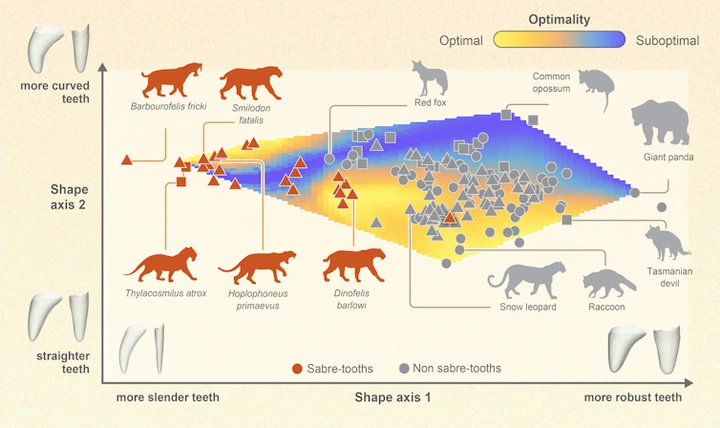
View pictures in App save up to 80% data.
Morphospace’ (visualization of shape diversity) of sabre and non-saber-tooth canines showing areas of optimal performance. Miranta Kouvari & Melisa Morales/Science Graphic Design
An eye-catching remedy
These findings shed light on the repeated evolution of extreme sabre teeth, likely influenced by natural selection favoring an ideal design. Additionally, they may offer insights into the reasons behind their eventual extinction.
Their growing specialization might have functioned as an "evolutionary ratchet," enhancing their efficiency as hunters while simultaneously rendering them more susceptible to extinction when environmental shifts occurred and their food sources dwindled.
Our research offers valuable perspectives on the evolution of extreme adaptations in various species. By combining biomechanics with evolutionary principles, we gain a clearer understanding of how natural selection influences organisms to excel in specific functions.
The sabre-toothed design showcases an impressive approach to a core mechanical problem, achieving a balance between effectiveness and durability — a principle that is similarly seen in tools created by humans.
The balance between sharpness and durability is a crucial factor in engineering, impacting the design of a wide range of tools, including surgical scalpels and industrial cutting blades.
Engineers creating precision instruments like hypodermic needles or advanced cutting tools can draw inspiration from nature's evolutionary designs, utilizing the same principles that influenced the development of these ancient predators.


